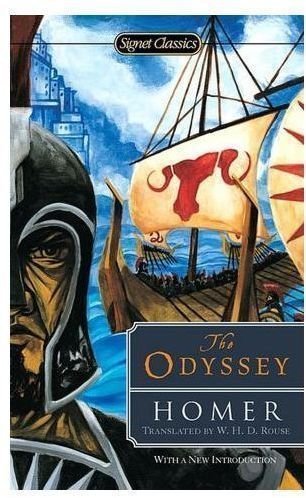Homer's Odyssey and Society - Multiple Authorship and the Analysts
In the nineteenth century, particularly in Germany, one of the main schools of Homeric scholarship was that of the Analysts. These
scholars sought to discover which parts of the Iliad and of the Odyssey are ‘original’ and which parts are later interpolations, or, alternatively, to find out whether the Odyssey is made up of several separate poems that have been joined together by a later redactor. Unfortunately, finding possible interpolations proved much easier than finding the ‘original’ poems. There are few lines within the Odyssey that have never been attacked as possible interpolations. It is not necessary to go into any detail regarding the majority of the passages that have been suspected to be later interpolations. There are however two examples that it is worth being aware of:
One rather striking quirk of the Odyssey is the fact that the first four books are primarily devoted to the adventures not of Odysseus, but of his son, Telemachus. Some analyst scholars have suggested that this ‘Telemachy’ was originally a separate poem. Furthermore, basing their argument on the still common supposition that ‘inferior’ must equal ‘inauthentic,’ some of the Hellenistic Greek scholars who commented on the Odyssey attacked the Telemachy on the grounds that Telemachus’ journey, involving as it does considerable risk without obvious advantage, can be argued to be inadequately motivated.
Many analyst scholars have also argued that all of book XXIV and part of book XXIII are in fact later additions. This view echoes the opinion of Aristophanes and Aristarchus as reported in the scholia, that the telos of the Odyssey was in fact XXIII.299. XXIII.296, 299 and 343 have all been put forward by scholars as the ‘original’ end of the epic. Furthermore, Odysseus’ account of Teiresias’ instructions, and the section of the conversation between Odysseus and Penelope that leads into it, is thought by some scholars to be an interpolation.
Finally, it has been argued that the ‘original’ poem consisted only of the wanderings of Odysseus, and that the Telemachy, his return, and the suitors, are all later additions.
Further Reading:
An excellent brief survey of the arguments for and against the analyst position regarding the passages mentioned above can be found in the relevant parts of Hainsworth, J. B., Heubeck, A. & West, S., A Commentary on Homer’s Odyssey ; Oxford UP 1988-1992
A strong defense of the ‘Telemachy’ against those who claim that it lacks sufficient motivation is made by de Jong, I., A Narratological Commentary on the Odyssey, Cambridge UP, Cambridge 2001
A clever recent defense of the end of the Odyssey as we have it, drawing upon the rest of the corpus of early Greek hexameter poetry for support, has been made by Kelly, A. ‘How to end an orally-derived epic poem’ TAPA 137 (2007)
This post is part of the series: Homer’s Odyssey and Society (OCR AS Unit CC2)
A series of articles intended to assist teachers and pupils studying or teaching Homer’s Odyssey, especially during the last two years of school.
